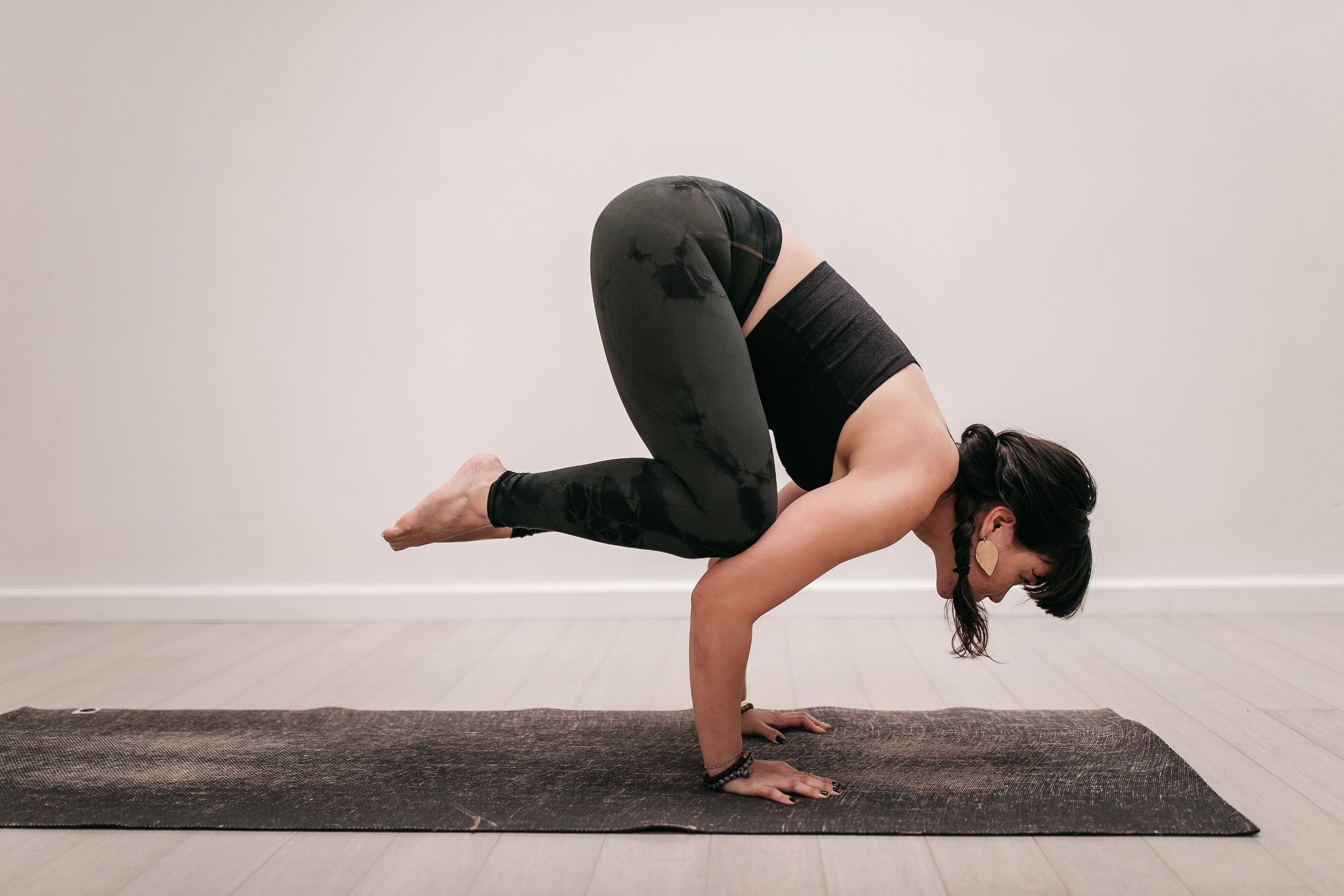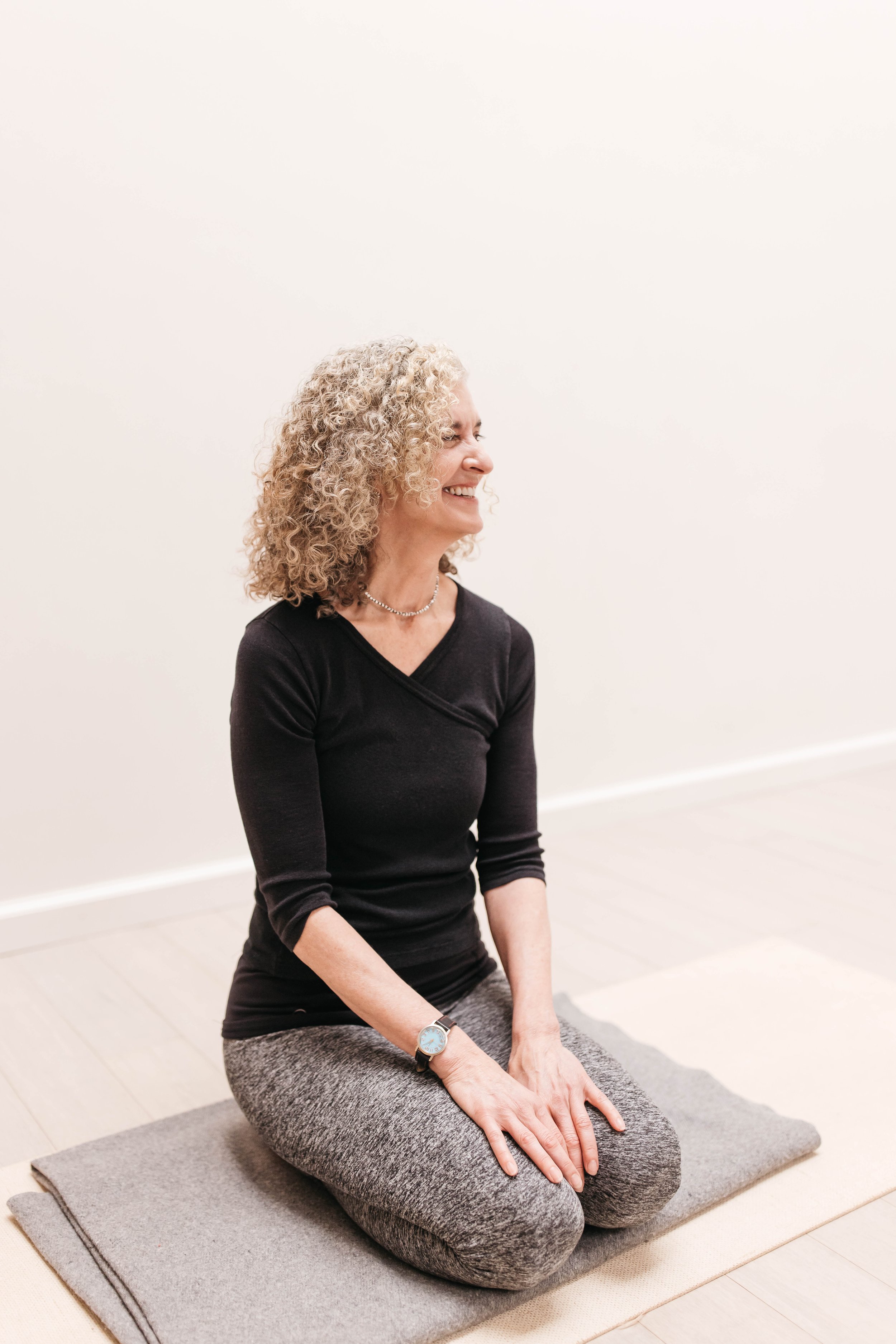Sālamba Śīrşāsana 1 (Supported Headstand)
sa = with
alamba = support
śīrşa = head
asana = literally, seat, but usually interpreted as pose or posture
Headstand is one of the most iconic of all the yoga postures. But if performed improperly, it’s potentially one of the most dangerous. In fact, there’s a good deal of controversy surrounding both Headstand and Shoulderstand. There are a number of teachers who refuse to teach these poses, maintaining the vertebrae of the neck aren’t meant to support the weight of the body. If you’re just beginning to practice this posture, we strongly advise you to follow our directions carefully, and be sure not to cut corners. If performed properly, Headstand is an exhilarating, invigorating pose. This breakdown provides instructions for beginning Headstanders.
Headstand is a pose that needs regular practice, at least 4 to 5 times a week. If you don’t think you can manage that, it would be better then to buy a U-shaped, padded Headstand bench, which runs anywhere from about $35 to $90. With the bench, the weight of your body is supported on your shoulders while your head hangs free. That will take any pressure off the neck and approximate the benefits of the full pose.
PROPS
Beginning Headstanders should practice against a wall. Learning how to balance in this pose usually takes some time, so at first the wall will provide support. Be sure the area of the wall you intend to use is free of hanging pictures and other objects. You’ll also need a firm blanket, preferably made of cotton, wool, or wool-like synthetic material, to pad your crown and forearms. Fold this blanket into a rectangle about 2 feet by 3 feet and position one of the long edges against the wall. You might cover the half-blanket away from the wall with a sticky mat, that will help prevent the elbows from sliding apart. Finally you’ll need a watch or clock to time your stay in the pose.
1. Interlace your fingers and tuck the bottom-most pinky into the other hand’s palm. You might make a habit of alternating the lacing of the fingers day by day. For the beginning practice press the bases of the palms together.
2. Kneel on the floor and press your forearms onto the blanket, knuckles an inch or two away from the wall, inner wrists perpendicular to the floor. Start with the elbows a few inches apart, then scrub them away from each other to shoulder width. Keep the inner wrists perpendicular and press down firmly through the inner elbows. At this point, your head is off the floor.
3. Straighten your legs and step one foot closer to the elbows (for this instruction, we’ll say the bent-knee leg is the right). To lift up into the pose, keep the left leg very straight, and with an exhale, swing the long left leg up and kick off the right with a sharp exhalation. Be prepared for one of two possibilities. 1) The swing and the kick aren’t enough to launch you up against the wall, and you drop back to the floor. Be sure to keep the swinging leg very strong, try not to let it bend. It may take some time before you get the hang of it and can kick up successfully. 2) The swing and the kick are overly strong and you thump heavily against the wall, alarming anyone on the other side of the wall. You’ll then have to learn how to moderate your swing and kick. But at least you’re up.
4. THIS IS INSTRUCTION IS CRUCIAL. Beginning headstanders SHOULD NOT have their head on the floor when kicking up. This will prevent any sudden and/or unequal pressure on the neck. Once you’re vertical and your heels are against the wall, then you can lower your crown LIGHTLY to the floor, but most of your weight should be borne by your shoulders and arms.
5. Press your heels strongly up along the wall, thighs turned slightly in. Ideally your tail bone is lifting to the heels to help lengthen the lower back. Firm your shoulder blades against and widen them across your back. Continue pressing down with the inner elbows, and try to distribute the weight on the forearms evenly from elbows to wrists.
6. To start, stay in the pose for about 20 to 30 seconds. VERY GRADUALLY increase your stay by 5 to 10 seconds a week, aiming for a total stay of about 3 minutes. Simultaneously, allow a little more weight to rest on your head and neck, but continue to bear the most weight on your shoulders and arms.
7. When coming out of the pose, LIFT YOUR HEAD OFF THE FLOOR. Just as you went into the pose with your head elevated, so should you exit. Be sure you have enough strength to do this. If you stay, for example, 30 seconds at first but can’t lift your head, for the next practice stay a shorter time, maybe 20 to 25 seconds. When coming down, you can lean your buttocks on the wall, bend your knees and roll down with an exhalation. Assume Child’s Pose for 30 seconds to a minute.
CONTRA-INDICATIONS
Obviously, if you have physical issues with your neck, the full pose will probably not be for you. It’s best if you practice then on a Headstand bench. The pose is also not recommended for people with high blood pressure, glaucoma, and women who are menstruating.
PRACTICE TIP
When you can lift into the pose smoothly and can safely bear a little more weight on your head, you can begin to learn how to balance. Position your head the length of your foreleg (or shin) away from the wall. Exhale, kick up, and immediately touch your feet to the wall, forelegs more or less parallel to the floor. If you’ve placed your head properly, your torso and thighs will be perpendicular to the floor, so your thighs and forelegs make a right angle. Now take one foot off the wall and stretch up through the heel. Hold for a few seconds, then return the foot to the wall and repeat with the other foot. Finally, if you’re feeling adventurous, take both feet off and strengthen your legs through the heels.
With Headstand, always remember the 3 P’s: practice, perseverance, and patience. Don’t be in a hurry to reach the 3-minute mark. You might let your regular teacher know you’ve embarked on the Headstand journey, and check in with her/him periodically with any issues or concerns.





